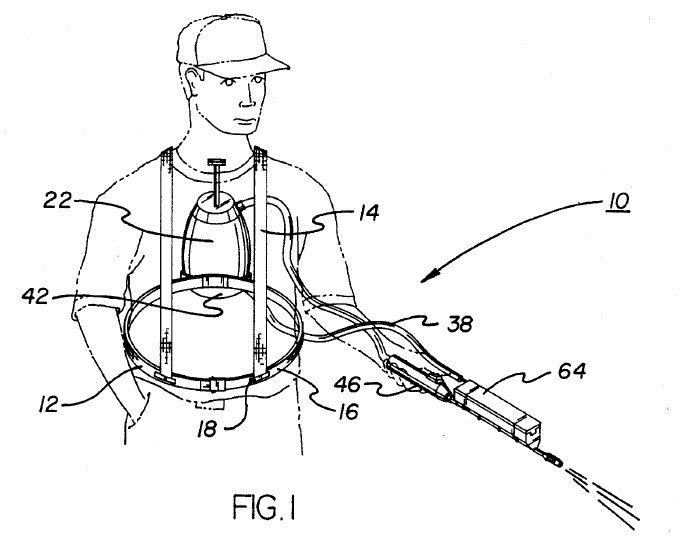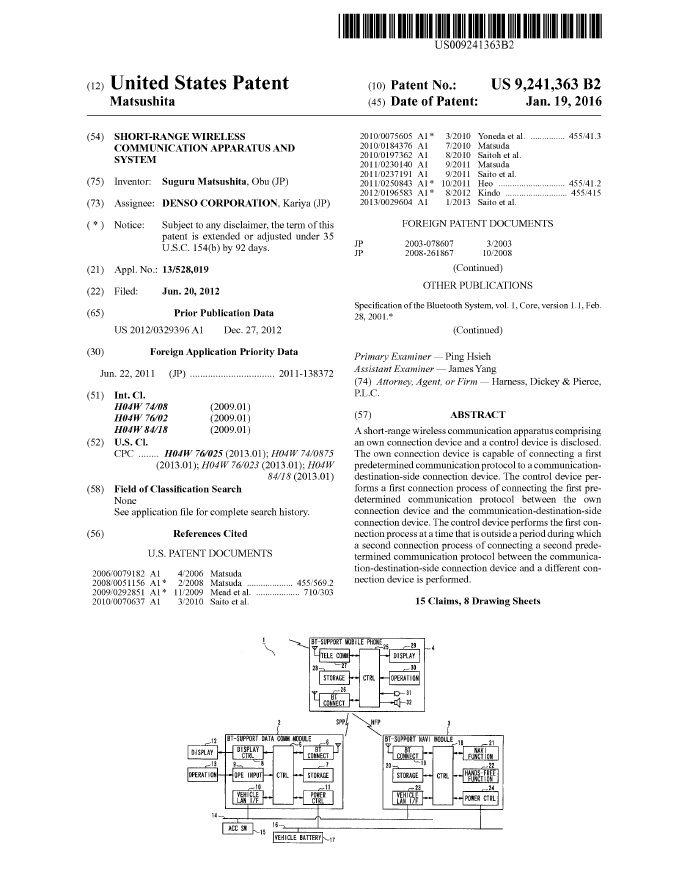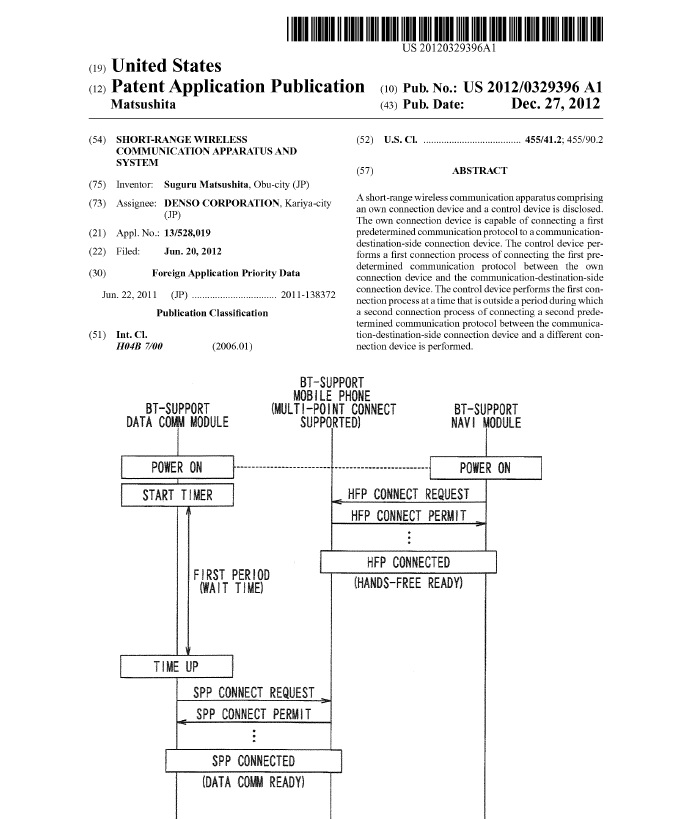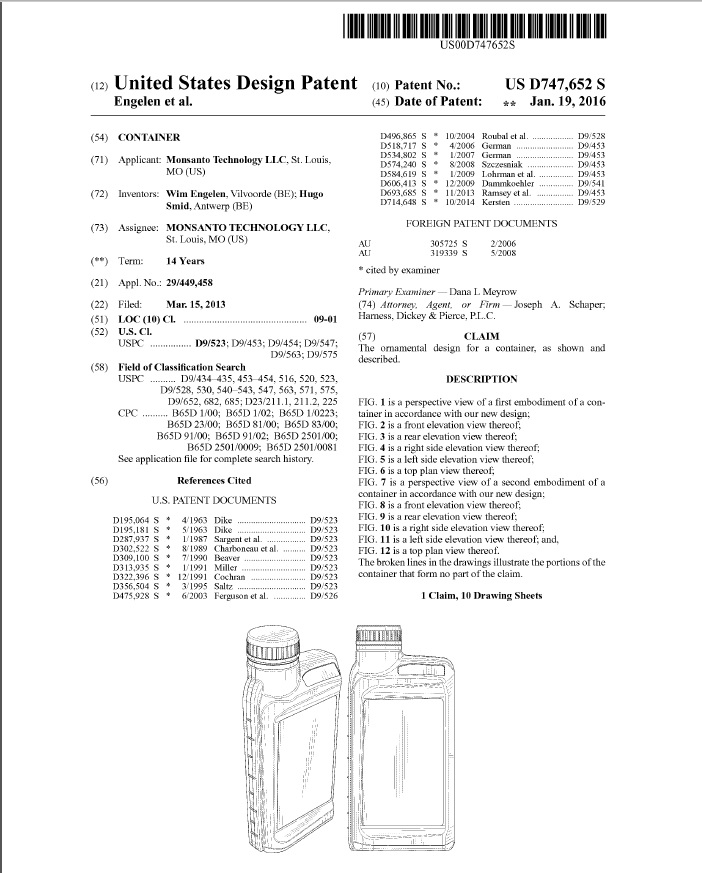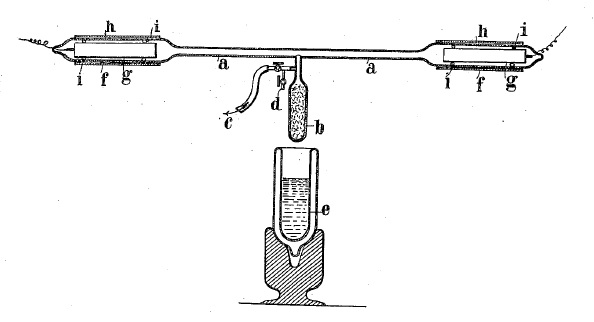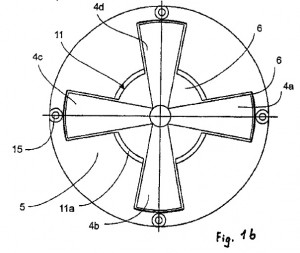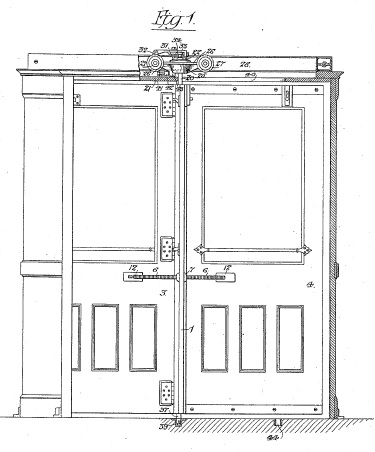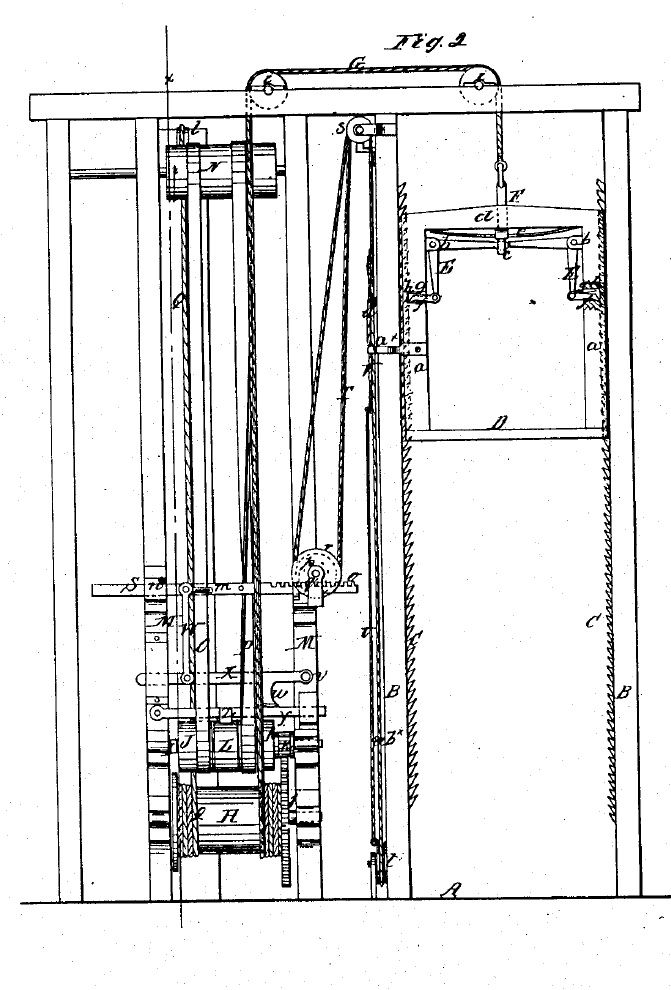On January 22, 1907, Thomas A. Edison received U.S. Patent No. 841677 on an Apparatus for Grinding and Separating Fine Materials.
Monthly Archives: January 2016
January 21 Patent of the Day
Recognizing the snow storms across the country this week, the patent of the day is U.S. Patent No. 5,595,343, issued to George Marhelko on January 21, 1997 in a snow coloring device:
The invention addresses the “continuing need for new and improved snow coloring device which can be used for allowing children or adults to paint snow in a variety of colors.” The availability of Mr. Marhelko’s invention notwithstanding, it is still a good idea to not eat yellow snow.
Know your patent documents
Most are familiar with a U.S. utility patent, have a seven digit number followed by a “B”:
Beginning in March 2001, applications have been published (unless the applicant requests non-publication at the time of filing. Publications are readily distinguished by the eleven digit number — four digits representing the year, and the seven digits representing a running count for the year:
Design patents have a six digit number prefaced with a “D” and followed by an “S”:
Plant patents have a five digit number prefaced with a “PP” and followed by a “P”:
 Reissue patents have a five digit number prefaced with an “RE” and followed by an “E”:
Reissue patents have a five digit number prefaced with an “RE” and followed by an “E”:
In addition to patents, there are other patent related documents that patent professionals occasionally stumble upon. Defensive Publications were offered between April 1968 and May 8, 1985, and were replaced by Statutory Invention Registrations. They have up to a six digit number prefaced with a “T”:
Statutory Invention Registration is a registration of an invention pursuant to 35 USC §157, and replaced Defensive Publications. SIRs were eliminated by the AIA in 2011. An SIR has up to a four digit number, prefaced by an “H” and followed by an “H”:
January 19 Patent of the Day
Cruciform – the Right Word for the Right Shape
Finding the perfect words to describe an invention is the cross that patent attorneys have to bear. When trying to describe something that it cross-shaped, the word cruciform (see, e.g., U.S. Patent No, 8,517,327) can make the job a litte easier.
Cruciform is a fairly mainstream option, appearing in more than 7141 U.S. patents, cross-shaped appears in more than 11819 patents.
January 18 Patent of the Day
On January 18, 1977, actress Julie Newmar received U.S. Patent No. 4,003,094 on Pantyhose with Shaping Band for Cheeky Derrier Relief.
The pantyhose were sold for a while under the name “Nudemar.” Julie received an earlier patent (U.S. Patent No. 3914799) on the panty hose, and another patent (U.S. Patent No. 3935865) on a brassiere. Go Catwoman!
January 17 Patent of the Day
On January 17, 1899, U.S. Patent No. 617,778. issued to Charles D. Seeberger on an escalator.
 Seeberger did not actually invent “the” escalator, as there were several earlier patents, including to Souder U.S. Patent No. 406,314 in 1889 (which was never built), to Reno U.S. Patent No. 470918 in 1892, and Wheeler U.S. Patent No. 479864 in 1892 (which was never built). Seeberger bought Wheeler’s patent, teamed with Otis, and in 1899 produced the first commercial escalator, which won the first prize at the Paris 1900 Exposition Universelle in France.
Seeberger did not actually invent “the” escalator, as there were several earlier patents, including to Souder U.S. Patent No. 406,314 in 1889 (which was never built), to Reno U.S. Patent No. 470918 in 1892, and Wheeler U.S. Patent No. 479864 in 1892 (which was never built). Seeberger bought Wheeler’s patent, teamed with Otis, and in 1899 produced the first commercial escalator, which won the first prize at the Paris 1900 Exposition Universelle in France.
January 16 Patent of the Day
On January 16, 1900, Theophilus Van Kannel received U.S. Patent No. 641,563 on the revolving door.
Actually there had been revolving doors before, including those shown in Van Kannel’s earlier U.S. Patent Nos. 387,571, 588,620, and 588,888, but his improvement was to allow the door to be collapsed “when direct ingress or egress is desired.” For his work Van Kannel was inducted into the National Inventors Hall of Fame in 2007.
Supreme Court to Review Important IPR Questions
Supreme Court granted Cuozzo’s Petition for Certiorari regarding two important questions affecting post-grant reviews:
1. Whether the Court of Appeals erred in holding that in proceedings, the Board may construe claims of an issued patent according to their broadest reasonable interpretation rather than their plain and ordinary meaning.
2. Whether the Court of Appeals erred in holding that, even if the Board exceeds its statutory authority in instituting an IPR proceeding, the Board’s decision whether to institute an IPR Proceeding is judicially unreviewable.
Cuozzo received support from 3M Company, Bristol-Myers Squibb Co., Cargill Incorporated, Caterpillar Inc., Eli Lilly and Company, GlaxoSmithKline LLC, Illinois Tool Works Inc., Johnson & Johnson, Monsanto Company, Pfizer Inc., The Procter & Gamble Company, Qualcomm Incorporated and Sanofi US filed an amici curiae brief, as did the Biotechnology Industry Organization, the American Intellectual Property Law Association, The Pharmaceutical Research And Manufacturers America, Intellectual Property Owners Association, The Intellectual Property Law Association of Chicago, New York Intellectual Property Law Association, Interdigital, Inc., Tessera Technologies, Inc., and Fallbrook Technologies, Inc. and Trading Technologies International, Inc.
These are both important questions. With respect to the use of BRI in post grant proceedings, the USPTO’s use of this examination standard where the patent owner is essentially disabled from amending the claims is unfair. With respect to reviewing institution decisions, it would be remarkable that a decision by the PTAB or any government agency could be completely immune from review, no matter how contrary to the statute.
January 15 Patent of the Day
On January 15, 1861, Elisha Graves Otis received U.S. Patent No. 31,128 on a Hoisting Apparatus (an elevator, to non patent attorneys).
His achievement was not so much the lifting people and things — this had been done for some time — but providing a brake so that if the rope snapped, the passengers wouldn’t plunge to their deaths (ironic for a man whose middle name was Graves).


